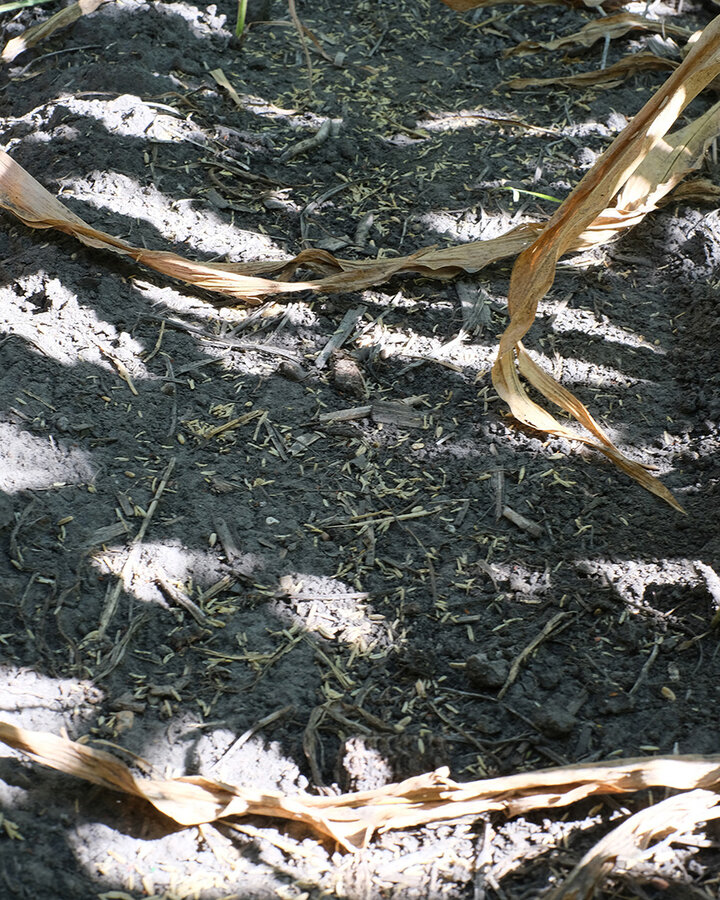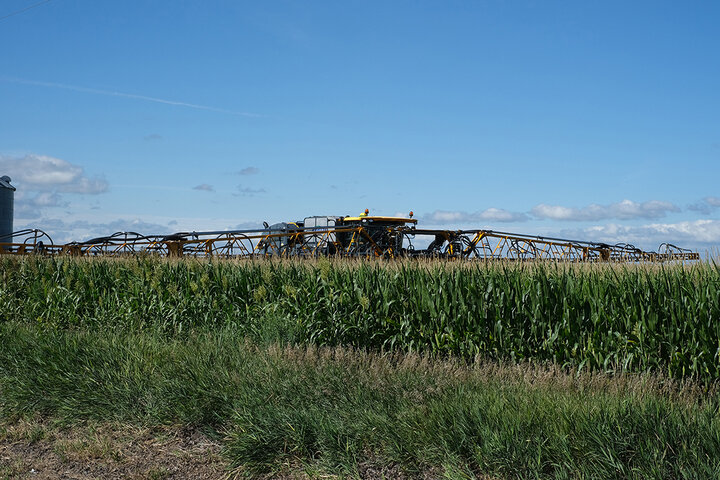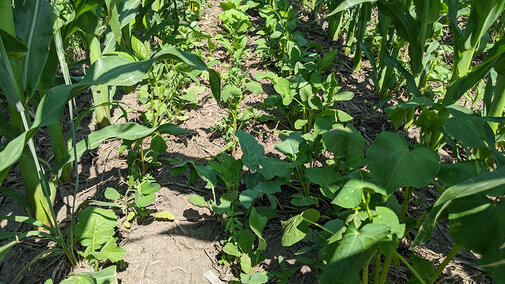Introduction
An overarching goal for planting cover crops is to produce as much biomass as possible during the growing window. Higher levels of cover crop biomass will reduce soil erosion, inhibit weed growth, and add carbon and other nutrients to the soil. However, one of the challenges in Nebraska is the limited amount of time between corn or soybean harvest and the onset of winter temperatures, which has traditionally been when most cover crops are planted. Unfortunately, this can limit the amount of biomass produced, reducing potential benefits.
While planting cover crops after harvest with a drill or planter may be the most convenient, there are several other planting methods that can increase cover crop success as measured by biomass production. These methods include interseeding during the vegetative growth stage of crop production, interseeding during late reproductive stages with aerial equipment and interseeding during late reproductive stages with a high-clearance ground machine. Each of these methods has potential positives and negatives.
Planting Cover Crops After Harvest
In areas of the country with more temperate winter climates, planting cover crops after corn or soybean harvest is a suitable option. These fields are often planted with a drill or air seeder, which provide good seed-to-soil contact and higher rates of germination and emergence. However, Nebraska winters can set in shortly after cover crop planting in the fall and be marked by extremely cold temperatures. This limits the amount of time for cover crops to establish and put on needed biomass.
Cold temperatures can also limit the number of species that can be planted after harvest. The best option after harvest is cereal rye because it can germinate at soil temperatures down to 34°F. This has allowed growers to drill cereal rye in November through March, with the focus on spring biomass production with a later termination date.
Interseeding Cover Crops During Vegetative Stages

Nebraska On-Farm Research suggests that interseeding cover crops into corn at V4 can be an option. At this growth stage, corn is usually short enough to plant cover crops with a grain drill or air seeder. This allows for good seed-to-soil contact and good rates of germination and emergence. Additionally, research has shown that cover crops planted around this growth stage will not affect corn yield. However, because the corn is growing so quickly and often reaches full canopy shortly after cover crop emergence, cover crop biomass production can be limited due to shading depending on the species planted.
Aerial Interseeding During Reproductive Growth Stages
Interseeding cover crops into corn later in the season can have its advantages. However, corn at these reproductive stages is quite tall and not accessible by traditional equipment. As a result, cover crops are frequently planted with either a plane or helicopter, with helicopters being the most common. The benefits of aerial seeding include the ability to cover large areas in a short amount of time, reduced risk of crop damage from equipment, and no impact to the soil from compaction, which is important in wet conditions.
Rather than conduct aerial interseeding at a specific growth stage, it’s recommended that growers time aerial interseeding when leaves begin to yellow and drop for soybeans or when leaves begin to senesce in corn. In non-irrigated situations, the timing may be more based on the opportunity for a rain event around crop maturity in late August through early September instead of targeting a specific development stage to ensure germination and emergence of the cover crop seed.

Aerial interseeding also has several disadvantages, the most glaring of which is the cost. Seeding with either a plane or helicopter often ranges from $20 to $30 per acre or more, in addition to seed costs.
Another potential drawback to aerial interseeding is the inconsistency of germination and emergence. With this method, seeds frequently get hung up in the crop canopy and never reach the soil surface. The seeds that do reach the surface are not incorporated, and instead rest on top of the soil. Because seeds need moisture to germinate, they will rely on either pre-existing wet soil conditions, precipitation or irrigation to germinate. Then, if conditions are dry during the critical seedling phase, cover crop losses can occur because roots are not adequately developed or protected. Aerial applicators often try to compensate for this by applying higher rates of cover crop seed, further increasing costs.
Interseeding During Reproductive Growth Stages with High-Clearance Machines
An increasingly popular method for interseeding cover crops is using a high-clearance machine, such as a sprayer, equipped with a hopper and dry-application system. These utilize drop tubes to place cover crop seeds between crop rows and directly on the soil surface. The advantage of this method is that existing equipment can be upgraded or modified to apply cover crop seed. Another advantage is that cover crop seed distribution is usually better than aerial methods, as the seed will not get stuck in the canopy.
Like the other options, there can be several disadvantages with this method. As the equipment is ground-based, damage to the primary crop can occur. This usually occurs in the end rows where the machine turns around but can also occur in the middle of the field if the operator drifts off the row. This can easily occur because the crop is usually at full canopy and seeing the ground and individual crop rows can be very difficult. Many manufacturers have steering aids, such as row sensors near the tires, that can help aid operators.
Lastly, depending on the species, cover crops planted later in the season may not produce as much biomass as those planted earlier, such as at V4 in corn.
Which Method to Choose?

Choosing a method depends on many factors, which will be individual to each farm and its goals, financial resources and equipment access. In general, any cover crop timing or method will be better at reducing soil erosion, inhibiting weed growth, and adding carbon and other nutrients to the soil than no cover crop at all.
Helpful Resources
The University of Nebraska-Lincoln’s new Cover Crop Biomass Calculator is a very useful tool in determining how the timing of cover crop planting and termination impacts cover crop biomass.
Other useful resources include the following:
- Interseeding Cover Crops into Corn
- Results from Interseeding Cover Crops into Corn or Soybeans
- Interseeding Cover Crops into Corn and Soybean: What We’ve Learned
- Optimum Planting Times to Establish Cover Crops Following Corn
References
Belfry, K.D., Van Eerd, L.L. 2016. Establishment and impact of cover crops intersown into corn. Crop Sci.
56:1245-1256. doi:10.2135/cropsci2015.06.0351

